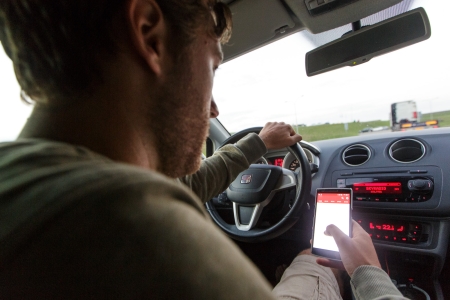Education and public information campaigns may contribute to cyclists’ and pedestrians’ awareness that phone use increases their risk in traffic. In the Dutch public information campaign ‘ON the road I am OFFline’, and ‘MONO’, both drivers and cyclists are incited to focus their attention on traffic and not to use a smartphone on the road. Cyclists may also download a special app (the Interpolis PhoNo app for instance) which awards points for cycling without handheld smartphone use, which will be converted into financial support of a charity.
Since July 2019, the Netherlands have banned handheld usage of phones or other devices while cycling. Cyclists ignoring the ban, risk a € 95 fine. As yet, little is known about the effectiveness of this countermeasure. Comparing self-reported phone use by cyclists before the ban was introduced [69], to phone use after the introduction [4] shows that adult cyclists made fewer handheld calls in 2019 than they did in 2017. The other phone activities (such as handsfree calls, texting, taking pictures or recording videos) did, however, not decrease. For young cyclists (aged 12-17), no difference was found for any distracting activity when comparing 2017 to 2019.
